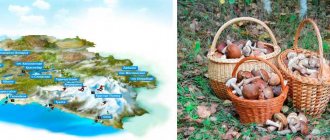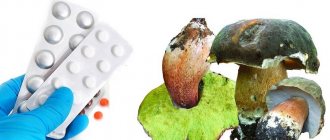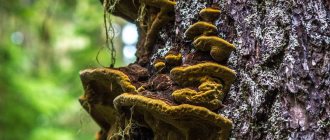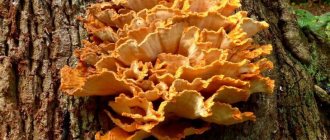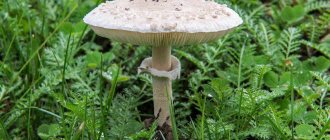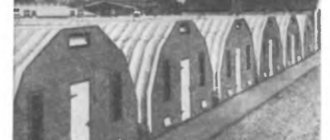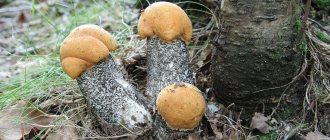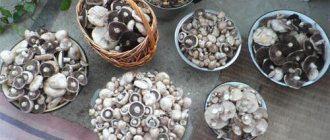If you think that a mushroom must have a round cap on a thick or thin stalk and a brown-yellow or white color of the mushroom body, then this article should at least surprise you. It turns out that Mother Nature has a very rich imagination, otherwise, where would such unusual edible mushrooms come from?
Amazing forms that very much remind us of alien creatures, or simply shapeless masses, flashy coloring, strange hats and legs, and the general absence of such - in fact, our article will talk about such specimens today. So, we bring to your attention the strangest mushrooms on our planet that you can safely eat, despite their sometimes terrifying appearance.
Beautiful saprophyte Sarcoscipha scarlet: photo and description
In early spring, in almost all countries and contingents, entire families of Sarcoscypha scarlet grow on fallen trees. A deeply concave cap is attached to a low whitish stem; its shape is usually similar to a bowl. The inside is bright red, while the outer “walls” have a lighter shade.
Some mushroom pickers claim that the pleasant-smelling, elastic flesh of sarcosciphy is completely edible, but most mushroom pickers still avoid these mushrooms, since they are too small, and also quite tough.
Due to its concave cap and bright color, the mushroom is also called the scarlet elf cup. It is curious that it grows only in ecologically clean areas, avoiding forest belts near large roads and cities, where the air is polluted with various emissions.
Milky blue
Blue milkweed (Lactarius indigo) belongs to the Russula family, found in North and Central America, as well as in Asia. The cap of a young mushroom is convex, and over time it becomes funnel-shaped, with the edges turned down. The pulp has a bright blue color, and after cutting, in air, it begins to turn green.
Blue milkweed is an edible mushroom, but it is only suitable for pickling. These mushrooms must be soaked in salted water to remove the milky juice and get rid of bitterness. Then the mushrooms are boiled and then salted. Dishes made from blue milkweed are popular in Mexico and Guatemala.
Bamboo mushroom: photo and description
If some mushrooms have a leg decorated with rings, then a bamboo mushroom has a whole lace skirt, and it is very long, almost right down to the ground. The color is most often white, but there are specimens with yellow or pink skirts. It is curious that the mushroom initially has the shape of an egg, from which a high, up to 25 cm, white stalk with a small convex cap, painted brown, emerges.
The surface of the cap is mesh-like, covered with an unpleasant-smelling, greenish mucus, which is very attractive to insects. In Chinese cuisine, bamboo mushroom is considered a delicacy for its tender and crunchy texture.
The Latin name for the mushroom is phallus indusiatus, but it is most often found as:
- Bamboo mushroom;
- Lady with a Veil;
- Dictyophora reticulata;
- Bamboo Girl;
- The odorous glacier in bamboo;
- Bamboo ginseng.
Mutinus canis
Photo: seyakha-school.ru
The mushroom, which has an unusual shape in the form of an oval-oblong body from eight to 18 centimeters in length, can be found in North America and Europe. Due to the fact that it looks like a dog's penis, the current name appeared.
The base of the mushroom is pink in color, which turns brown at the end. The tip itself is covered with viscous mucus with an unpleasant odor. There is also a hole that can be seen when ripe. The mucus has spores that are carried by insects and birds when they come into contact with the fungus. Note that when the top is destroyed by insects, it becomes orange. The mushroom itself then begins to decompose. After a few days there is nothing left of him.
Early ripening mushroom and aphrodisiac - Veselka: photo and description
Another type of phallus is known as veselka. It also develops: at first the mushroom body has the shape of an egg, from which the mushroom itself grows on a high stalk with a small convex olive-brown cap. Nevertheless, the growth rate of the Veselka is amazing: it takes only half an hour for the leg to completely come out of the egg.
The cap is covered with a slimy coating and smells very foul, attracting insects. Actually, they spread spores throughout the forest, while at the same time clearing the mucus. Without it, clearly visible cells appear on the cap.
Veselka is an edible unusual mushroom, which also has aphrodisiac properties, but only if you eat young specimens (eggs) and remove the shell from them.
bird's Nest
There is such a mushroom - Nidulariaceae. This mold is found mainly in New Zealand. The shape from which the mushroom gets its name is an ingenious solution for the spread of spores. Rainwater accumulates in the spore eggs; eventually, such an “egg” breaks through and shoots spores over distances of up to 1 meter.
Bird's nest / ©Flickr
Purple miracle amethyst varnish: photo and description
At the end of summer, in the forests, in damp meadows, amethyst varnish (also known as purple) grows - small mushrooms on a thin stalk with an outstretched cap. The entire mushroom body is painted lilac-violet, even the plates under the cap, which smoothly descend to the stem, the only thing is that in old specimens they fade. The edible tender pulp is also purple, with both a pleasant taste and smell.
The poisonous mushroom pure mycena is extremely similar to old lacquer mushrooms. It can be distinguished only by the characteristic unpleasant smell of radish and the plates of pure white color (in the amethyst varnish they are slightly purple).
Pear-shaped raincoat
It grows in the temperate zone mainly on rotting parts of deciduous and coniferous wood.
The stem and cap are fused into a single fruiting body. Its average width is 3.5 -7 cm, and its height is 3-5 cm. Young puffballs are pear-shaped white with thin dry skin, which darkens over time, acquires a brown tint, becomes rough, and cracks. There are small spikes on the surface that fall off easily when touched.
The pulp feels like cotton wool and does not exude any obvious aroma.
Like the others, Puffball can only be eaten while it is young and the flesh is whitish. It is permissible to fry and stew without pre-cooking. It tolerates freezing well and does not lose its properties, taste and benefits.
Giant champignon or giant lagermania: photo and description
One of the largest mushrooms in the world is a member of the champignon family, Lagermania gigantea. This unique mushroom can usually be found in the steppes and meadows of central Russia.
It has no legs, and the mushroom body itself looks like a huge round egg, lost by an extinct dinosaur, or someone’s head, for which the mushroom itself is popularly simply called “bighead.” And because bigheads appear during the rainy season, they are called raincoats.
The size of the head inspires respect: there are significant specimens whose diameter exceeds 0.5 m, and this is taking into account the fact that they are edible. Well, as they say, a catch is a catch! It is easy to determine the maturity of the mushroom: young bigheads should be white, with flesh of the same color; in older ones, the shell darkens, and the flesh first becomes green-yellow and finally brownish.
Old bigheads should not be eaten - their flesh contains a large amount of toxins, which actually leads to poisoning, and the symptoms do not appear immediately, but only on the second day.
Grille red
Photo: gribnik.info
The inedible mushroom has several names due to its peculiar appearance. For example, a basket or a red net.
It is considered a very rare mushroom - listed in the Red Book. It can be found in autumn and spring in forest litter and on the remains of rotting wood.
The unpleasant smell of rotting immediately discourages “tasters” from trying it.
Red Book mushroom hericium coral: photo and description
Among the unusual edible mushrooms, there is one species that, perhaps, will never be confused with others. Its kind simply does not exist in nature - it is coral hericium. The mushroom body is simply a huge branched bush with many straight or curved thorns. As a rule, the bush is white, but it can also be cream.
Not everyone is able to come across hericium coral, because it is an extremely rare mushroom. In Russia, it grows mainly in the Far East, Krasnodar Territory, and Siberia. It grows on trees and stumps, only on deciduous trees. Young, aromatic and elastic flesh is white, less often pinkish or yellowish, smells pleasant and is very tasty, but old mushrooms become tough.
Coral mushroom, as hericium is also called, has other names based on its shape. It is also known among mushroom pickers as lattice-shaped hedgehog or hericium branched.
About the insidiousness of mushrooms
In mushroom places, almost everyone forgets to look around and become attached to some landmarks in the area when they get excited. The insidiousness of mushrooms in luring gullible mushroom pickers into the thicket is reflected in fairy tales, works of classics and reports of the Ministry of Emergency Situations. So you have to be careful. Better - with a compass, and even better - with those who know the area.
It’s good when there is a connection in the forest, you can immediately look up an incomprehensible mushroom on the Internet, but even for the European part this is still a great success, and there’s nothing to say about the Trans-Urals.
Giant curly mushroom Sparassis: photo and description
A huge curly sparassis grows on the roots of coniferous trees. By its nature, it is a parasitic fungus, because it destroys the tree, provoking the disease red rot, which actually leads to the death of the owner. The weight of one adult mushroom can reach up to 10 kg, and the width can be more than 0.5 m.
It grows in a dense bush, which is formed, in principle, by small mushrooms with wavy curved caps, their diameter does not exceed 5 cm. The mushroom bush has a round shape and is very curly, for which it actually received its name. It is also often called cabbage (hog cabbage, mushroom cabbage, or hare cabbage). The mushroom is edible: the young, fragile pulp is extremely tasty and smells like nuts, but in older sparassis it becomes quite tough.
Mushroom cabbage is protected by the Red Book, as it is on the verge of extinction.
Unusual among the unusual
I think that readers will be interested in getting acquainted with some mushrooms that live in different regions of the world, which amaze with their unusualness.
Clavaria Zollinger, or coral mushroom
Zollinger's Clavaria is very exotic - Clavaria zollingeri Lév., which is sometimes called coral mushroom, or purple coral. For Europe, this is a rare species, included in the red list of species in Denmark and Great Britain. And in Ireland it is used as an indicator species to assess the diversity of fungi in poor grassland substrates. It has been noted in the Netherlands in recent years and may apparently spread further. The mushroom is not considered edible.
Archer's clathrus, or cuttlefish mushroom
Another unusual mushroom is the Archer's clathrus (Clathrus archeri (Berk.) Dring). This mushroom is sometimes called “devil’s fingers” or “cuttlefish” for its terrifying appearance. This species is inedible, from the Red Book of Ukraine. Its homeland is far away - in Australia and Tasmania, and in Europe it spread through France.
Clathrus red, or trellis
And here is another, simply alien clathrus - red clathrus, or, as it is also called, lattice. This is also a wood-destroying, inedible mushroom that can rarely be found in forests. It can be found in southern regions with mild climates.
Trametes versicolor, or turkey tail
Quite interesting is the multi-colored tinder fungus, or multi-colored trametes (Trametes versicolor (L.) Lloyd). In this photo he illustrates his English-language nickname - “turkey tail”. It grows everywhere and can change color, which adds an element of surprise to the color scheme. This mushroom is studied to combat oncology and is used in traditional medicine.
Glowing mushrooms
It is worth noting another unusual mushroom from subtropical Asia - Mycena сlorophos (Berk. & MACurtis) Sacc., reminiscent of James Cameron's fantasies in Avatar.
It never received a separate Russian name, only a scientific, Latin one. This mushroom is bioluminescent, glowing pale green. Lives on plant woody debris. The optimal temperature for mycelium will be +27 °C, and for fruiting bodies - +21 °C, which is the norm for the subtropics. The maximum glow occurs precisely at +27 °C and about 25-39 hours after the mushrooms themselves have formed and the cap has fully opened. At +21 °C the glow will persist for 3 days.
Hydnellum Peca, or bleeding mushroom
The “bleeding mushroom” (Hydnellum peckii Banker), which in the scientific literature is called Peck’s hydnellum, is a little scary. And even more frightening is its other name - “devil's tooth”. It has a bitter taste and is therefore inedible. Grows on the ground in spruce and pine forests. It has been described from forests in North America and Europe, and in recent years has also been discovered in Iran and Korea.
Sarcoscipha scarlet
The scarlet sarcoscypha (Sarcoscypha coccinea) also has a beautiful name - scarlet elf cup. This mushroom is found throughout the world and can usually be seen in the cooler months, early spring or late autumn. The edibility of the mushroom is not known for certain, but in any case it is too coarse, tasteless and small to be collected on an industrial scale.
"Veiled Lady" or Bamboo Mushroom
This is the Lady with a Veil mushroom, or bamboo mushroom (Phallus indusiatus Vent.). The mushroom uses a “veil” to attract flies that carry spores. The mushroom is used in haute Chinese cuisine, grown on plantations, and used in medicine.
Amethyst lacquer
But the amethyst lacquer mushroom (Laccaria amethystina (Huds.) Cooke, “Deceptive Amethyst”) amazes with its purple color. But with age, the purple color disappears. In principle, the mushroom is edible, but can accumulate harmful substances.
"Devil's Cigar"
Another “shock” mushroom is the “Devil’s Cigar” (Chorioactis geaster (Peck) Kupfer ex Eckblad). This mushroom “opens” with 3-6 rays with a characteristic hissing sound as spores scatter, similar to cigar smoke.
Blue mushroom
Blue mushroom (Entoloma hochstetteri (Reich.) Stev.) is truly blue thanks to azulene, which is found in some marine invertebrates. This mushroom grows in New Zealand and parts of India. Interestingly, the image of this mushroom appeared on one of the New Zealand banknotes (50 local dollars). And it is still unknown whether it is poisonous or not, what do you think?
Cereal mushroom: photo and description
Among the mushrooms with interesting shapes, it is worth highlighting the cone mushroom - a very funny mushroom with a cap that looks like a pine cone. It is convex and completely covered with scales, which hang from the edges of the cap, and are also present on the stem.
Its color is no less interesting: young cone mushrooms are gray-brown, but as they mature, they become chocolate-black. The pulp of this miracle mushroom, oddly enough, is light, but when cut, it first turns red, and only then becomes dark, almost black with a purple tint. Emits a characteristic mushroom smell.
The cone mushroom is classified as a conditionally edible mushroom: you cannot be poisoned by it, but not everyone likes the fibrous pulp.
Liver mushrooms
For example, during hot weather, a mushroom grows in the lower part of the trunk of an old oak tree, which does not resemble anything edible and evokes strange associations. Apparently, I was not the only one who had such associations, since the fungus is called liverwort (fistulina vulgaris) , sometimes it is called “mushroom liver” .
Liverwort, or Fistulina vulgaris, or “fungus liver”. © Tatyana Nikolina
Liverwort, or Fistulina vulgaris, or “fungus liver”. © Tatyana Nikolina
An absolutely amazing mushroom with pulp that turns red in the air, reddening juice and a slight sour taste due to the high content of vitamin C. Young mushrooms are more spherical and dry, with age they stretch out into a wide tongue or fan, and the top becomes slimy and shiny.
This slimy skin must be removed during cooking. Fried liverwort is delicious, I haven’t tried it in another form yet, the mushroom is not found in large quantities. I’ll find it again and marinate it, its flesh is a very unusual color.
The main thing is that it is impossible to confuse it with any other mushroom, and it can be seen from afar - go and look at the old oak trees closer to the base. Grows in all regions where there are oak trees. This fungus destroys wood, so picking it and eating it is a very useful act.
Orange tremors: photo and description
Oddly enough, the jelly-like shapeless mass on the trees is the edible orange tremors mushroom. It doesn’t look very good, of course: the sticky, trembling mushroom body, up to 10 cm in size, is slightly transparent, colored yellow-orange.
In dry summers, almost all the liquid from the tremors evaporates, and the mushroom turns into a kind of crust, but only after heavy rains does it swell again and acquire its former gelatinous structure. But the bright orange color disappears in rainy summers, giving way to a white, almost transparent color.
The trembler can also often be found on certain tinder fungi - this is how its natural parasitic properties are manifested. Young gelatinous mushrooms are considered a delicacy, especially in China, where they are used to make soup. Old mushrooms are not suitable for culinary masterpieces - they are very tough.
Orange yeast
A very interesting, unusual and quite tasty mushroom. Consists of smooth, sinuous, shiny lobes of yellow or orange color. The pulp has a gelatinous consistency, elastic, without a distinct odor. In dry weather it dries out, but after rain it regains its previous consistency.
It grows in late autumn, sometimes the mushroom can be seen in winter during thaws. There is a chance to harvest a good harvest in early spring - at the same time as morels and even earlier. Fresh or dried mushrooms make a very tasty, rich broth.
In fact, there are many more delicious edible mushrooms than we think, and their harvesting season is much longer. From early spring until frost, you can find delicious mushrooms in the forests.
Mokruha spruce mushroom in a glass cap: photo and description
In coniferous forests, under spruce trees, there grows a mushroom that is quite ordinary at first glance, called spruce moth. But if you find young mushrooms, then do not be alarmed by the slimy blanket that completely covers the cap and extends to the stem. From a distance it seems that the mushroom is wearing a glass cap or a spacesuit.
As it grows, the transparent blanket breaks, and its remains are visible only on the stem. In this form, the spruce moth also looks very beautiful: the cap is painted purple-brown. The pulp of the mushroom is light, smells pleasant and is extremely tasty.
Devil's Cigar
This mushroom not only has an original name (the official name is Chorioactis geaster), but is considered almost the rarest mushroom on the planet. It is also called the "star of Texas" because it was found only here - in the central part of this state and in two other places in Japan. While the spores are inside, the mushroom is something like a brown capsule, indeed, somewhat reminiscent of a cigar. After the mushroom opens its spores, it looks like a star or an ordinary flower, like those that grow on cacti. The devil's cigar is the only mushroom in the world that makes a whistling sound when expelling spores. Maybe that's why the mushroom acquired such an ominous name?..
Devil's Cigar / ©Flickr
Sarcosoma globular mushroom: photo and description
Brown barrels filled with dark liquid and covered with a shiny disk on top - it’s hard to imagine a more unusual mushroom. This is a unique spherical sarcosoma, listed in the Red Book. You can find it only among thickets of moss, in an impenetrable forest thicket.
Sarcosoma is considered conditionally edible (some gourmets fry the fruiting body and claim that in this form it is incredibly tasty), but the main value of the mushroom lies in its liquid. It has healing properties and is very widely used in folk medicine.
To sum it up, one thing can be said: not everything that looks strange actually is. Unusual mushrooms can be edible and even very tasty, but if you are not sure of their edibility and do not know how to cook them, you should not put yourself at risk. Collect only mushrooms that are well known to you and boil them well in order to avoid unpleasant consequences.
Good luck to you!!!
Preface
Mushroom picking is one of the most useful and exciting activities; it is practiced by people of all ages and professions. There are more and more mushroom pickers every year. Since ancient times, mushrooms in Rus' have been an aid in nutrition, a favorite dish of both rich and poor segments of the population. With great skill, mushrooms were dried, pickled and prepared from them into soups, borscht, and baked pies. This skill was passed down from generation to generation. Each region of Russia had its own methods of preparation and processing, its own secrets of culinary mastery. Mushrooms as a food product have not lost their importance in our time. The purpose of this book is to continue acquaintance with the world of mushrooms.
The book contains the Latin names of mushrooms. This is very important, since in books about mushrooms there is such a discrepancy in Russian names that only by the Latin name can one sometimes determine which of them we are talking about.
Often people return from the forest with empty baskets, because they know only well-known mushrooms, and mistake unfamiliar ones for inedible ones. Many mushroom lovers are trying to expand their knowledge about mushrooms and increase the number of species they collect. The book presents so-called little-known edible mushrooms, the identification of which will help expand the use of wild mushrooms and evaluate their quality. However, they are not the only ones that will be discussed in the monograph.
Among mushroom hunting lovers, all varieties of porcini mushrooms (birch, oak, spruce, pine, etc.) enjoy great prestige. They are counted individually, unlike other mushrooms collected in baskets. Based on the color of the fruit body and forest registration, about 20 forms of porcini mushroom are distinguished. All of them are famous, belong to the first category of quality and are not little-known edible mushrooms, but are presented in the book in the same group with little-known ones. The author did this deliberately. Why? Firstly, porcini mushrooms are on the verge of rare status. Secondly, mushroom pickers do not always distinguish porcini mushrooms by species names. All twenty-odd forms of the porcini mushroom, including those described in the book, are usually referred to briefly by mushroom collectors as “porcini mushroom.” The author draws readers' attention to species diversity and encourages them to recognize porcini mushrooms by sight.
The well-known, widespread, harvested, tasty white mushroom (dry milk mushroom) does not belong to the little-known edible mushrooms. However, the author includes it in the text and explains to mushroom pickers, especially beginners, that the white mushroom (dry milk mushroom) is not a relative of the milk mushrooms, since it does not produce the milky juice characteristic of milk mushrooms. In mycological science, the mushroom is clearly assigned to the genus “Russula”. It would be correct and fair to call this mushroom white russula, and not dry milk mushroom.
When writing the book, the author relied on his own observations accumulated while collecting mushrooms from early spring to winter frosts every year since 1960. The color photographs placed here from the author’s personal collection were taken during mushroom trips in Karelia, Murmansk, Leningrad, Kaliningrad, Ulyanovsk, Moscow, Samara regions, in Western Siberia (in the Kemerovo, Novosibirsk, Tomsk, Tyumen regions), in the Urals, as well as in Crimean peninsula and southern Ukraine. Mushrooms grow everywhere: in the taiga and steppes, in mountain forests, in gardens, meadows, swamps, in the tundra, etc. The author’s task should be considered an attempt, with the help of this book, to attract people’s attention to nature, to awaken, especially among young people , the desire to preserve the world around us, to see the richness of forest colors through the world of mushrooms, to live in harmony with nature,
Text of the book “Little-Known Edible Mushrooms”
Family Pluteaceae
Pluteus atricapillis (Batsch
.) Fayod (Syn. Pluteus cervinus (Schaeff.) Kumm.)
Xylotroph
hat
5-15 cm in diameter > at first bell-shaped, later flat-convex, silky, with a thinly ribbed or cracked edge, gray-brown or gray-brown, fading in dry weather, usually dry, but in wet weather it can be slightly mucous.
The plates
are frequent, whitish, later pinkish from spores.
The pulp
is soft, white, with a faint radish odor.
The leg
is white or brownish, longitudinally fibrous, hard.
It grows
everywhere, especially on rotting wood of deciduous and coniferous trees, on and around stumps, even on piles of sawdust, singly or in small groups. Unpretentious to external conditions. It can be found in the mushroom off-season, in dry summers. Fruits from May to October. In plutei, small insects often get stuck between the plates.
Preparation
. It is eaten after boiling. Suitable for all types of processing.
Pluteus golden (Pluteus golden-yellow, Pluteus lion-yellow)
Pluteus leoninus (Schaeff.: Fr.) Kumm. (= Pluteus luteovirens Rea)
Xylotroph
hat
up to 12 cm in diameter, broadly bell-shaped, then convexly prostrate with a tubercle in the middle, velvety, with a striped edge, golden yellow with a darker ocher or brownish center, hygrophanic, in wet weather with a dark ocher edge.
The plates
are wide, frequent, first pale yellow, then pink, with a characteristic serrated edge.
The pulp
is thin-fleshed, with a faint woody odor.
The leg
is dense, longitudinally striped, fibrous, smooth or curved, sometimes twisted, solid, then hollow, yellowish, with a brown base.
It grows
in coniferous and deciduous forests on rotting wood immersed in the soil, on rotten stumps and around them, singly, and is rare. Fruits in July – October.
Preparation. Edible.
Used after boiling. Suitable for all types of processing.
Volvariella silky
Volvariella bombycina (Schaeff.: Fr.) Sing.
Xylotroph, parasite
The young mushroom is enclosed in a common protective shell - a volva. As the fungus grows, the volva ruptures and forms a sac-like formation at the base of the stalk. hat
8-15 cm in diameter, first cone-shaped, then convex-prostrate, tuberculate, radially fibrous, silky, white, then yellowish.
The plates
are frequent, first white, then pinkish.
The pulp
is thick, tender, white, then yellowing, with a pleasant smell.
The leg
is dense, fibrous, solid, without a ring, swollen at the base, sometimes curved, with a wide, loose ocher-white sac-like volva with a lobed edge.
Grows
on old, weakened and dead deciduous trees: elm, willow, aspen, maple, poplar; on their dead trunks. Often settles in open hollows. Often found within the city. Fruits in July, August and later.
Preparation
.
A conditionally edible mushroom,
after preliminary boiling it is eaten freshly prepared.
Family Dungweeds, Coprines – Coprinaceae
Gray dung beetle (ink dung beetle)
Coprinus atramentarius (Bull.: Fr.) Fr.
Coprophile
hat
4-10 cm in diameter, initially ovoid, then broadly bell-shaped, radially ribbed along the edge, scaly.
With age, the edges of the cap first tear, and then spread, like ink, into one black mass. The color of the cap varies between grey, ash and brownish grey. The plates
are loose, white, then brown and finally black, dissolving into an inky black liquid.
It appears already in the spring in the grass along the sides of forest roads, gardens, orchards, on the stumps of deciduous trees, where it grows in bunches. Fruits until October. This mushroom is edible when young
(with white or pinkish plates) and is good for preparing hot dishes. Gray dung beetle contains Antabuse, which is why it should not be used simultaneously with alcohol. This may cause poisoning; skin rashes, feeling of heat and nausea, dizziness, rapid heartbeat. You should also not drink alcohol within 24 hours after eating dung beetle.
White dung beetle (shaggy dung beetle, crested dung beetle)
Coprinus comatus (Mull.: Fr.) Pers.
Coprophilus, humic saprotroph
Young fruiting body
covered with a common blanket.
cap
becomes visible covered with scales.
An elongated ovoid cap with a diameter of 5-10 cm. The plates
are at first white, then quickly turn red, when fully ripe they turn black and finally blur together with the pulp into a black liquid.
The leg
is up to 15 cm high, silky, hollow, with a white movable ring that quickly falls, at the base with a sac-like vagina.
The flesh
of young mushrooms is tender.
grows
in groups in meadows, in orchards and orchards, near farms, where the soil is rich in organic fertilizers. Fruits in summer and autumn. This excellent delicious mushroom can be eaten if it is still young, but when its plates begin to turn pink, it is no longer suitable for food.
Scattered dung beetle (scattered dung beetle, scattered psatyrella)
Coprinus disseminatus (Pers.: Fr.) SF Gray
Humic saprotroph, xylotroph
Hundreds of these little mushrooms stand together in a very small area. Up close it looks like a mushroom lawn. hat
1-2 cm in diameter (sometimes less), always has a half-opened shape, folded-striped, bell-shaped, at first whitish, then light ash-gray, gray-violet, later even brownish-violet, and even later they blur.
The leg is
very brittle, with a white flake-like descent at the bottom, hollow.
The plates
are very thin, delicate, whitish or beige, then black.
Grows
on or near tree stumps in large, twisted clumps from spring to fall.
The mushroom is not poisonous,
but as an edible mushroom it is completely useless, i.e.
has no nutritional value.
Flickering dung beetle (sparkling dung beetle, rufous dung beetle)
Coprinus micaceus (Bull.: Fr.) Fr.
Xylotroph
hat
2-4 cm in diameter, yellow-brown, yellow-brown, red or yellow-rusty, ovoid at a young age, later bell-shaped, the surface is covered with small shimmering shiny scales or a granular, easily erasable whitish coating.
The plates
are almost white at first, then darken and finally blur with black ink.
The pulp
is thin, pale yellow.
The leg is
cylindrical, flexible, silky-fibrous, hollow, whitish.
It usually grows in large groups on wood buried in the soil in pastures, in vegetable gardens, near rotten stumps in forests, from May to November. The young mushroom is edible;
are used for hot dishes
.
Do not eat with alcohol.
Psatirella velvety (Lacrymaria velvety, Lacrymaria tomentosa, Lacrymaria velvety)
Psathyrella lacrymabunda (Bull.: Fr.) Moser (Syn. Lacrimaria velutina (Fr.) Konr. et Maubl., Psathyrella velutina (Pers.: Fr.) Sing.)
Humic saprotroph
hat
up to 12 cm in diameter, at first hemispherical, bell-shaped, then convex-prostrate, velvety, fibrous-scaly, with white hanging flakes at the edges, yellow-brown, light ocher, yellowish-rusty.
The plates
adhere to the stem, first light, then dark brown, sometimes with droplets of liquid in wet weather.
The pulp
is fragile and tastes bitter.
This edible mushroom of average quality
retains a bitter taste even after boiling.
The leg
is off-white, fibrous-felt, hollow inside.
The mushroom grows
in small groups in light deciduous forests, along paths, in gardens, along field roadsides, in summer and autumn. Only young mushrooms are collected; when mature, psatirella turns black.
Preparation.
It is used as food after preliminary boiling for preparing hot dishes.
Family Cobwebs – Cortinariaceae
Staining webwort (blue-stemmed webwort, straight webwort, smeared webwort)
Cortinarius trivialis Lange (Syn. Cortinarius collinitus (Sow.: Fr.) Fr.)
Symbiotroph (mycorrhiza former)
hat
4-10 cm in diameter, initially convex, then almost flat, with a small tubercle, mucous, yellow-orange, ocher-brown or dark brown, cobwebby covering (cortina) mucous, white or bluish.
The blades
are adherent, wide, initially bluish-violet or whitish-ochre, then rusty-brown.
The leg
is narrowed towards the base or smooth, dense, solid, white with a purple or bluish tint, mucous, with rusty membranous bands.
The pulp
is dense, whitish or slightly yellowish, without much odor.
It grows
on the soil in coniferous and deciduous (mainly aspen) forests, in late summer and autumn.
A little-known edible
mushroom. Easily confused with poisonous spider web species, be careful!
Preparation
. It is eaten fresh after preliminary boiling for about 15 minutes. You can salt and marinate.
Purple cobweb (purple cobweb, blue plumpweed, cyanosis)
Cortinarius violaceus (L: Fr.) Fr. SF Gray
Symbiotroph (mycorrhiza former)
hat
5-15 cm in diameter, convex at first, then expanding more and more until a small tubercle remains at the top.
The skin is dry, velvety or felty. The beautiful deep purple color fades with age. The plates
are attached to the stem with a tooth or notched, wide, sparse, dark purple, then with a rusty-brown coating from spores.
The pulp
is thick, bluish, fading to whitish, with a nutty taste, without much odor.
The stalk
is up to 12 cm high, with traces of belts of cobwebby covering, tuberously swollen at the base, solid, later spongy or hollow.
It grows
in August–September in mixed and coniferous forests, mainly with pine.
Purple cobweb is listed in the Red Book of Russia
as a rare species, so it should not be collected.
Bracelet webwort (ringed webwort, trimmed webwort, red bracelet webwort, red bracelet webwort)
Cortinarius armillatus (Fr.: Fr.) Fr.
Symbiotroph (mycorrhiza former)
hat
15 cm in diameter, first convex, then flat, with a wide tubercle in the center, silky-fibrous, with small red scales and a reddish edge from the remains of the bedspread.
The color of the cap varies from yellowish-brown to rusty-red. The plates
are attached to the stem like a tooth, sparse, initially light, then reddish-brown with spore powder.
The pulp
is pale brownish, with a faint smell of dampness, and is often saturated with moisture.
The leg
is club-shaped, grayish-brown, with two or three transverse brick-red belts (bracelets), often curved.
It grows
from late July to September in damp places of coniferous and mixed forests along the edges of raised bogs, among moss, next to birch trees. Prefers to settle on acidic soils.
Preparation
.
Edible
mushroom. It is used without preliminary boiling for preparing hot dishes, salting, marinating, and drying.
Triumphal cobweb (yellow cobweb, yellow marsh grass)
Cortinarius triumphans Fr. (Syn: Cortinarius crocolitus Quel.)
Symbiotroph (mycorrhiza former)
hat
up to 15 cm in diameter, at first hemispherical, covered from below with a dense cobwebby blanket.
Then convex-prostrate with a small brown tubercle, fibrous-scaly, mucous in wet weather, from bright and ocher-yellow to yellow-brown; cortina is very abundant, yellowish. The pulp
is thick, with a damp smell, whitish-cream.
The plates
adhere to the stem, are frequent, at first gray-bluish; in mature mushrooms, the mushrooms have a clay or rusty-ocher color.
The leg
is up to 15 cm high, thickened below, whitish-yellowish, solid, with several dark scaly belts - the remains of a private cobwebby cover. Fruits in August – September in deciduous and coniferous forests with the participation of birch, singly or in small groups.
Preparation.
A tasty
edible
mushroom, perhaps the most delicious among the spider webs. Used fresh after preliminary boiling. Canned in all ways, the best of which is drying.
White-violet cobweb
Cortinarius alboviolaceus (Pers.: Fr.) Fr.
Symbiotroph (mycorrhiza former)
hat
up to 10 cm in diameter, at first semicircular, convex, later flat-prostrate, with a small blunt tubercle in the center, dry (sticky after rain), silky, whitish or grayish-violet, then pale ocher;
cortina is very abundant, silver-lilac-violet. plates
are first covered with a cobwebby blanket, notched or adherent, bluish, then violet-ocher or tobacco-brown.
The pulp
is thick, whitish-blue, later brownish, sometimes slightly bitter.
The leg
has a thickened base, often curved, white with a bluish or purple tint, with remains of cortina.
It grows
in forests with oak and birch, on moist soils, and often lives in acidic soil.
Preparation
.
Conditionally edible
mushroom of low quality. After preliminary boiling (drain the broth, rinse the mushrooms), it can be boiled, fried, pickled, or salted.
Ringed cap (white moorweed, wrinkled honey agaric, dull rosettes, or bogweed)
Rozites caperatus (Pers.: Fr.) Karst.
Symbiotroph (mycorrhiza former)
hat
bell-shaped, then convex and finally flat, with a weakly defined central tubercle, wrinkled and with cracks along the edge, covered with a thin powdery lilac-whitish coating, especially in its center.
The color of the cap varies from yellowish to light brown-ochre. The edges of the cap become sawtooth. The plates
are weakly adherent, closely spaced, light beige, then brick-ocher, rusty-brown with spores.
The pulp
is dense, thick, whitish-yellowish, with a mild nutty taste.
The leg
is strong, solid, with a white-yellowing membranous adjacent ring.
It is found
in coniferous and deciduous forests on the soil among mosses in bright places from August to October, it is often encountered.
Preparation. Delicious high quality mushroom,
is popular. Used universally: fresh, salted.
Family Strophariaceae – Strophariaceae
Summer honey fungus (linden honey fungus, kyneromyces variable)
Kuehneromyces mutabilis (Schaeff.: Fr.) Sing et Smith.
[= Pholiota mutabilis (Fr.) Kumm]
Xylotroph
In our forests, in addition to autumn, meadow, and winter honey mushrooms, summer honey mushrooms also grow, which, in terms of their taste and nutritional qualities, are good edible mushrooms. These are four different mushrooms. If the autumn, meadow and winter honey fungus belong to the same family of mushrooms - row mushrooms, but different genera, then the summer honey fungus is assigned by mycologists to another family - the Strophariaceae. Summer honey fungus always grows in colonies on rotten stumps of birches and lilies. The main distinguishing feature of a mushroom is its cap.
, the edges of which seem to be saturated with water, with a diameter of no more than 5-8.
The plates
are first whitish, then rusty brown.
Leg
with a quickly disappearing ring, below which the color is dark brown.
Only the caps are eaten. The leg is very hard. Grows
from late May to September. In many countries it is bred artificially.
Golden scale (golden-yellow scale, sulfur-yellow scale, willow)
Pholiota aurivellus (Batsch.: Fr.) Kumm. (Syn: Pholiota adiposa ss. Fr.)
Xylotroph, facultative parasite
hat
up to 15-20 cm in diameter, densely fleshy, broadly bell-shaped, then convex with a smoothed tubercle in the center, with pressed large brownish flaps - the remnants of a tear that preserves the mushroom when it is all in the ground, sticky-greasy in wet weather, shiny when dry.
The plates
are notched or adherent to the stem with a tooth.
At first they are yellowish, then brownish-brown. The flesh
of young mushrooms is white, turning yellowish when broken.
The leg
is solid, curved, with a narrow fibrous, quickly disappearing ring.
As a semi-parasite, golden scale is harmful because it can cause rot in living wood. It grows
mainly on living and dead wood of various deciduous trees - aspen, willow, birch. Fruiting bodies are formed in the second half of summer and autumn.
Preparation.
A little-known
conditionally edible
mushroom, after preliminary boiling the mushroom retains its bright yellow color. It is boiled, fried, salted, pickled.
Common flake (sharp flake, fleecy flake, scaly flake, protruding-scaly flake, dry flake)
Pholiota squarrosa (Weig.: Fr.) Kumm.
Xylotroph, facultative parasite.
hat
up to 12 cm in diameter, hemispherical, then flat-prostrate, dryish, the surface is dotted with numerous protruding, pointed large scales.
The plates
are frequent, adherent to the stem; in young mushrooms they are straw-yellow, then rusty-colored.
The pulp
is strong and dense, has a rare smell.
The leg is stocky, sometimes curved and tapering at the base. The stalk has a developed membranous ring of a yellowish color, above which there are no scales on the stalk; below the stalk is densely covered with dark bristly lagging scales. Grows
on deciduous wood, less often coniferous trees. Fruits from August to late autumn.
Preparation
. It is used for food after preliminary boiling together with other mushrooms (since the mushroom alone is tasteless). Hard legs are removed during harvesting.
False honey fungus seroplate (false honey fungus poppy, hyfoloma capitosa, hyfoloma poppy, pine honey fungus, hyfoloma ocher-orange)
Hypholoma capnoides (Fr.) Kumm.
Xylotroph
hat
with age it expands to 8 cm in diameter.
In young mushrooms it is convex, then becomes flat with a smoothed tubercle in the center, from light ocher-yellow to red-yellow, in old mushrooms there are sometimes flakes on the cap - the remains of a private blanket. The plates
of young mushrooms are pale, but soon change color to smoky gray, reminiscent of the color of poppy seeds.
The leg
without a ring, sometimes with its remains, is hollow, pale yellow at the top, rusty-brown at the base, often curved.
The pulp
is light yellow. A typical tree mushroom, its fruiting bodies grow in bunches on stumps and on the roots of pine and spruce hidden in the ground. It can be collected from spring to autumn.
Preparation.
A good
edible
mushroom, used after preliminary boiling in soups and main courses, salted, pickled and dried.
Stropharia blue-green
Stropharia aeruginosa (Curt.: Fr.) Quel
Xylotroph, litter saprotroph
hat
3-8 cm in diameter, at first ovoid, then bell-shaped and finally prostrate, green with a bluish tint, yellowish closer to the middle, fading with age.
A fringed border stretches along the edges, and in the center there is a wide, but not very protruding tubercle, mucous membrane. The plates are
first grayish-green, gray-violet, then acquire a blackish-violet hue.
The stalk
is mucous, the same color as the cap or lighter, coarsely fibrous, hollow, below the film ring it is densely dotted with white scales.
Pulp with
a faint rare odor and the same taste.
Picked young mushrooms quickly turn yellow. It grows
on the soil in forests of various types, on stumps, especially coniferous trees, landfills among organic waste, usually found from July to October.
Preparation
. The mushroom is used after boiling for 15-20 minutes to prepare main courses. You can salt and marinate.
Stropharia Gornemann
Stropharia hornemannii (Fr.: Fr.) Lundell
Xylotroph, litter-saprotroph
Large mushroom. hat
with a diameter of 5-10 (up to 18) cm, hemispherical, convex, bell-shaped, later prostrate with a wide mound, first red-brown, then ocher-brown, ocher-olive, lilac-ocher-grayish, with a brighter middle.
The plates are
at first light gray, later dark gray, violet-brown.
The pulp
is fleshy, soft in taste, but with an unpleasant odor.
The leg
is solid, pale yellow, with a ring - the remnant of a private veil, with white protruding scales below the ring.
It is found
in late autumn in coniferous forests, especially in spruce forests on buried wood, near old spruce stumps, and often grows in birch forests.
There are contradictions in the mycological literature regarding the edibility of Gornemann's stropharia. In some publications, this mushroom is considered conditionally edible;
after preliminary boiling, it can be used for pickling in a mixture with other mushrooms. In other books, the mushroom is considered poisonous without any justification or explanation, although it is collected by many mushroom pickers.
Family Bolbitiaceae – Bolbitiaceae
Early vole (early bentgrass, meadow field grass, early agrocybe)
Agrocybe praecox (Pers.: Fr.) Fayod
Humic saprotroph
hat
barely reaches
7
cm in diameter.
In a young mushroom it is hemispherical, and then convex-prostrate with a wide tubercle, with remnants of a cover along the edge, light, sometimes off-white, yellowish-brown, becoming creamy-beige with age. The plates
are notched, initially whitish or pale clay in color, eventually turning brown, they are protected by a creamy blanket, which subsequently remains on the edge of the cap.
If you cut the stem vertically, in young specimens you can see the longitudinal nucleus inside. The leg
later becomes hollow.
The mushroom appears already in May and grows until the summer months in pastures, gardens and parks, and in oak forests. But it is more often found
in meadows, hence the name. Mushroom pickers do not collect this mushroom, but it can be eaten after boiling. As an edible mushroom, it is not taken into account.


